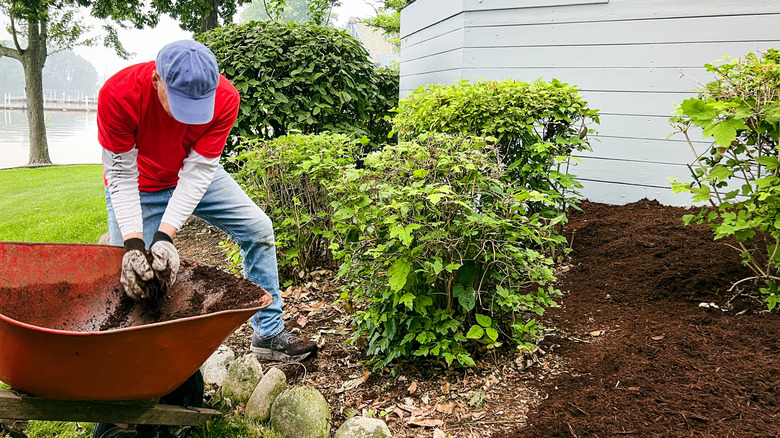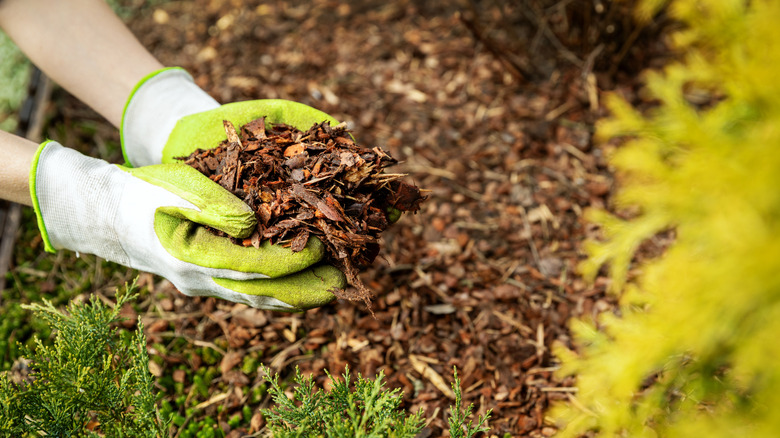Gardener Warns Of Mulch Error That Kills perennials—A 'Recipe For Disease And Plant Death'
Mulching your perennials is probably at the top of your fall to-do list for the garden of your dreams. It is a great way to protect your precious perennials over the winter months, helping to lock in moisture, regulate soil temperature, and keep them protected from the harsh weather. It is like a cozy blanket for your plants! However, TikTok user and professional garden coach, @power_plants, warns that improper mulching can lead to plant disease and even death, and, unfortunately, you may be doing it without even realizing it.
One type of improper mulching, often referred to as volcano mulching, happens when you pile mulch right up against the base of your perennial shrubs, plants, and trees. A huge amount of mulch is heaped up against the crown of the plant, creating a volcano shape. It seems like a logical way to protect the plant, but it's a recipe for disaster. The issue with this common mulching mistake is that the wet mulch will make the bark or crown damp and moist. Constant moisture will cause the plant to break down and spread fungal and bacterial disease.
Furthermore, too much mulch around the base can block the roots from getting enough oxygen, and if the mulch is really wet, the bark and stems may begin to rot. The effects of improper mulching do not happen straight away but rather cause a slow and steady decline. This means that many people who make this mistake do not realize that they are causing their perennials to suffer until it's too late.
How to mulch perennials correctly
To mulch correctly, you must ensure that no mulch is touching the crown or trunk of your plant. Apply 2 to 4 inches of organic matter to the root area, always keeping it at least 3 inches away from the base of the plant. The three-three-three rule is often used as a guide for mulching established trees. Use 3 inches of mulch with a 3-inch gap between the mulch and trunk, creating a 3-foot circle around the trunk. You can use a variety of organic matter for mulch, with leaves, straw, wood chips, and pine needles being common choices. There are inorganic mulch options, but these are less preferable, as they will not decompose and benefit the soil.
It is also important to consider timing when it comes to mulching. You don't want to mulch too early in the season, as this can affect dormancy and encourage disease. Ideally, your plants should be dormant before you apply the mulch. If they're not, adding mulch could keep the soil warm and delay dormancy. You should wait until the temperatures are consistently around freezing to ensure your plants are ready to be mulched.
This technique is usually fine for most perennials, but there are certain exceptions. For example, hybrid tea roses will often need double protection over the winter months. Always double-check the plant's needs before applying mulch to ensure that they are getting what they need to survive the cold weather. Mulching in the fall makes for stronger, healthier plants in the spring, but only if you are doing it right!

